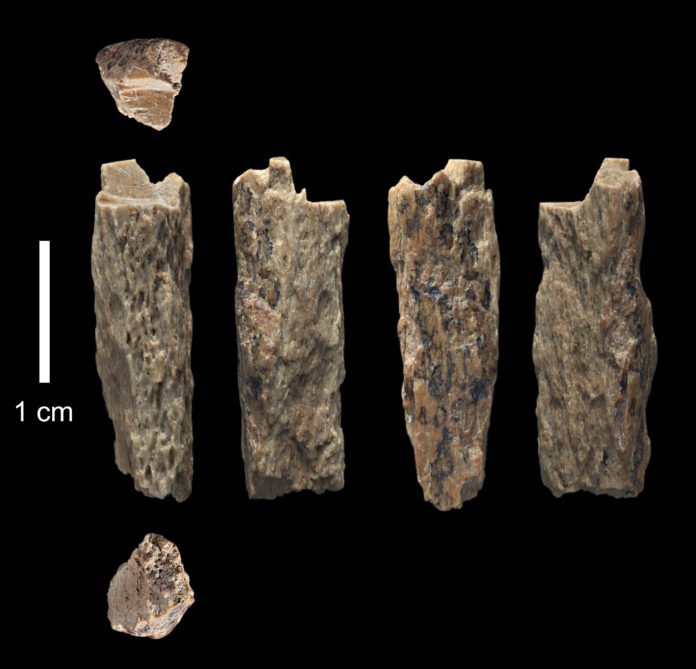Scientists at the Max-Planck Institute have discovered 90,000-year-old bone fragment in southern Siberia. They’ve found the remains of a prehistoric female whose mother was a Neanderthal and whose father belonged to another extinct group of human relatives known as Denisovans.
Both groups disappeared 40,000 years ago. Neanderthals lived in Europe and Asia, while fossils of Denisovans are known only from the cave where the fragment was found.
Viviane Slon, a researcher at the Max Planck Institute for Evolutionary Anthropology said, “We knew from previous studies that Neandertals and Denisovans must have occasionally had children together. But I never thought we would be so lucky as to find an actual offspring of the two groups.”
Bence Viola of the University of Toronto said, “The fragment is part of a long bone, and we can estimate that this individual was at least 13 years old. The bone fragment was found in 2012 at Denisova Cave (Russia) by Russian archaeologists. It was brought to Leipzig for genetic analyses after it was identified as a hominin bone based on its protein composition.”
Fabrizio Mafessoni from the Max Planck Institute in Leipzig said, “An interesting aspect of this genome is that it allows us to learn things about two populations – the Neandertals from the mother’s side, and the Denisovans from the father’s side.”
Scientists determined that the mother was genetically closer to Neandertals who lived in western Europe than to a Neandertal person that lived before in Denisova Cave. This demonstrates Neandertals moved amongst western and eastern Eurasia tens of thousands of years before their disappearance.
Benjamin Vernot from the Max Planck Insitute said, “Analyses of the genome also revealed that the Denisovan father had at least one Neandertal ancestor further back in his family tree. So from this single genome, we are able to detect multiple instances of interactions between Neandertals and Denisovans.”
Svante Pääbo, Director of the Department of Evolutionary Genetics at the Leipzig Max Planck Institute said, “It is striking that we find this Neandertal/Denisovan child among the handful of ancient individuals whose genomes have been sequenced. Neandertals and Denisovans may not have had many opportunities to meet. But when they did, they must have mated frequently – much more so than we previously thought.”
Scientists have published their study in the journal Nature.
